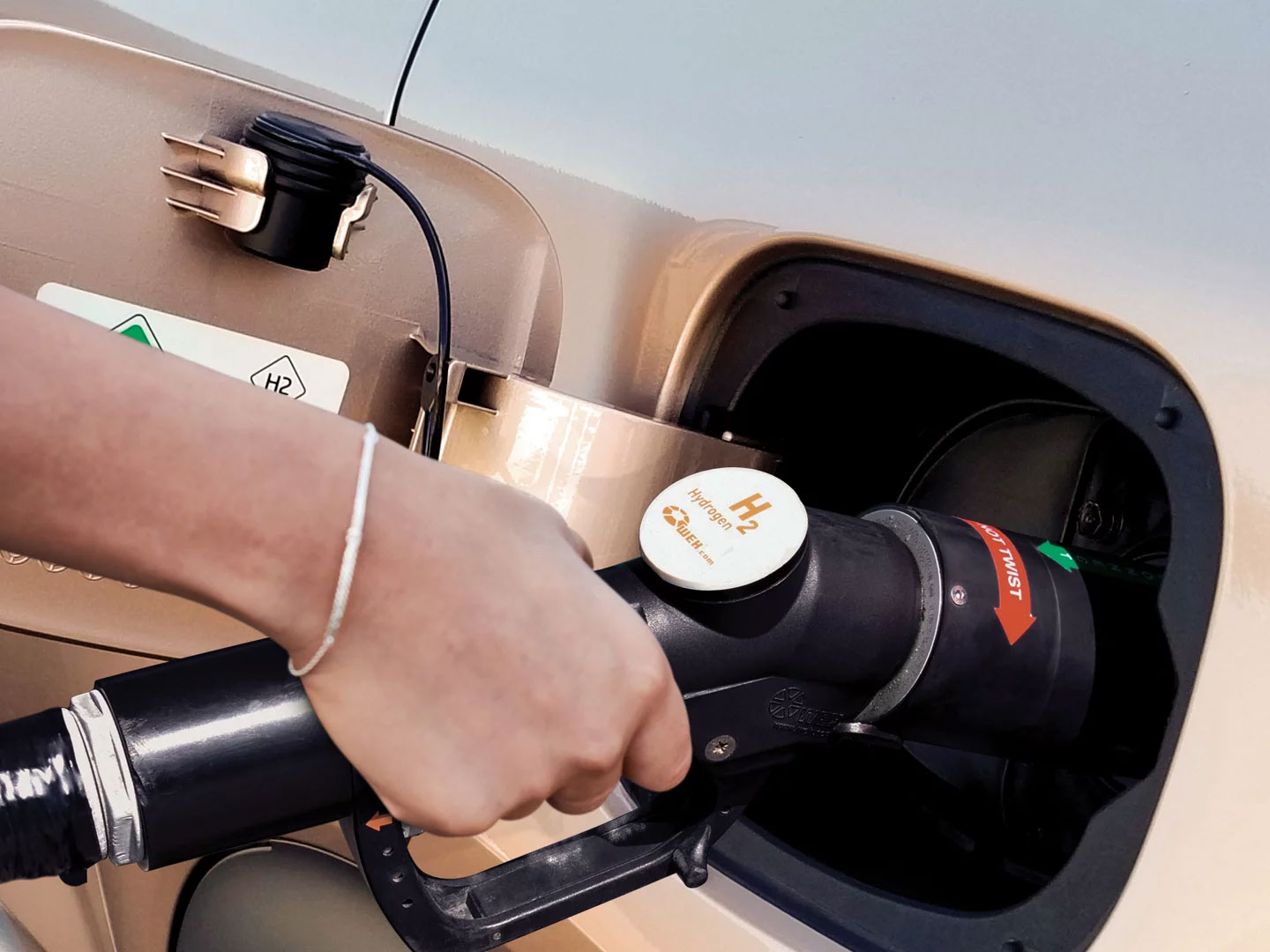Hyundai Fuel Cell Cars Explained

There has been growing interest and investment in electric vehicles as an alternative to gasoline-powered vehicles. This is because car emissions from gasoline-powered vehicles are affecting the air quality and the environment negatively. Electric vehicles are a good solution; however, Hyundai's fuel cell, hydrogen-powered vehicles may be another option. Learn more below.
How a Fuel Cell Car Works
Hydrogen-powered vehicles or hydrogen fuel cell car technology can be an alternative to using traditional gasoline-powered vehicles. How does this work? Hydrogen is combined with oxygen to create electricity. Compressed hydrogen gas is forced through a fuel cell stack that transforms that chemical energy into electrical energy.
When electricity is created this way, instead of harmful chemicals being produced, water vapor is produced as the by-product. This is a much more eco-friendly alternative than a traditional gasoline powered engine and the emissions it produces.
2023 Hyundai Nexo
Hyundai has been dedicated to furthering fuel cell car technology, and they are bringing you the 2023 Hyundai Nexo Fuel Cell car. This is the first hydrogen-powered SUV; it has zero emissions, and it can give you a driving range of well over 300 miles.
This vehicle has seating for five people split between two rows with features like heated seats, a 12.3-inch infotainment display, Apple CarPlay and Android Auto, Bluetooth, wireless device charging, and LED lighting. You even have safety features like smart cruise control, lane keep assist, blind spot monitoring, rear cross traffic alert, parking distance warning, high beam assist, driver attention warning, and more.
Your 2023 Nexo has a curb weight of around 4,000 pounds, a vehicle length of about 184 inches, and cargo capacity of up to 56.5 cubic feet (with rear seats folded down).
Refueling and Range
As mentioned above, the Hyundai Nexo offers you a driving experience with zero emissions. This vehicle is hydrogen-powered, and that hydrogen powers a lithium ion battery. You can have up to a 380-mile driving range in your Hyundai Nexo, and then, you can fill your vehicle back up with hydrogen as quickly as you would fill this vehicle up at the gas pump.
FCEVs vs. EVs
Many people have heard of electric vehicles as an eco-friendly alternative. With an electric vehicle, you have the ability to charge your vehicle and drive on electricity. Hyundai fuel cell cars also drive using electricity, but this electricity comes from hydrogen power. The main difference here is the refueling itself. With an electric car, when you run out of range, you need to charge your vehicle by plugging it in. A fuel cell car needs to be refilled with hydrogen. This means a fuel cell car can be "charged" much more quickly, but there are not as many hydrogen fueling stations as electric charging stations right now. Fuel cell vehicles also tend to allow you a longer driving range than electric vehicles, which can be beneficial for those longer road trips.
Both fuel cell vehicles and traditional electric vehicles can be great options. The best option for you depends on your needs and priorities. If you have questions, you can reach out to us at Granite Hyundai.
Get Your Hyundai Nexo at Granite Hyundai
At Granite Hyundai, we want to provide you with the latest technology and the greatest vehicles. If you want to check out the Hyundai Nexo, our expert staff can give you some more information and get you started with the purchasing process today. Reach out to us to learn more.

